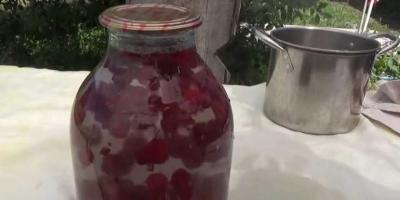From set temperature The freezer and refrigeration chambers of the refrigerator directly determine the period of injury of various products, as well as the amount of useful vitamins and microelements in them. Today when healthy eating it became quite topical issue For many, manufacturing companies are trying to improve their equipment, trying to take into account all the wishes of consumers, including those that seemed impossible just 5 years ago.
We are talking about the so-called “freshness zones” - separate compartments in the refrigerator where it is possible to set the required temperature independently of other zones. However, traditionally, with the advent of new features, new problems arise. In particular, incorrect temperature settings lead to rapid spoilage of food and the occurrence of unpleasant odor and bacterial growth.
How to set the optimal temperature in the refrigerator
In the majority existing models In middle-class refrigerators, temperature adjustment is carried out mechanically by turning the corresponding lever to one of the positions: “Max”, “Medium” or “Min”. Manufacturers recommend using extreme positions in rare exceptional cases, for example when large quantities perishable products or vice versa if you need to preserve everything beneficial features and vitamins.
The rest of the time it is better to use the average temperature, which ranges from +2 to +6 degrees - optimal value for most cases. The exact temperature of the refrigerator can be found in the instructions, but there is no guarantee that they will correspond to the real one, since depending on the workload of the device, the time of year and the frequency of opening the door, heat exchange occurs differently.
In order to accurately determine the temperature, it is not enough to simply put a thermometer in the chamber. Experts recommend placing a pan of water on the middle shelf, and measuring its temperature a day later. This way you will get the most accurate result.
Refrigerator temperature zones
Let's move on to a situation in which you can install yourself different temperatures in different compartments. Refrigerators with one or more freshness zones are adjusted at the production stage and arrive at your home completely ready for use. However, it still doesn’t hurt to double-check the temperature and set it according to the recommendations.
- Fresh meat should be stored in the refrigerator for no more than two days at a temperature of +1 to +3 °C.
- Vegetables can remain fresh and healthy for a long time from +3 to +6 °C.
- Fruits such as apples, pears, etc. are stored for several weeks at temperatures from +5 to +8. Moreover, exotic species (bananas, avocados, passion fruit, etc.) do not require placement in the refrigerator at all, since they lose useful material, and taste. Their temperature range is from +15 to +20 °C.
- Eggs, cheeses and various dairy products require +1 to +5 °C.
- Ready meals (soups, buckwheat, rice, etc.) should be stored from +3 to +5 °C.
Optimal freezer temperature
This value depends on how long you intend to freeze the food. For industrial purposes, it is recommended to set the temperature to at least -30 °C. For home use-20 °C will be enough - the value at which meat can be stored for up to six months. At a temperature of -8 to -12 °C, meat is stored for one and a half weeks.
So, from the information above, it is worth noting the following: what temperature regime you choose will depend
- shelf life of products
- their quality and content of vitamins and beneficial microelements
- refrigerator defrost frequency
- refrigerator service life
The ideal temperature suitable for all types of products is within +4 - +6 °C. For freshness zones, the degree of cooling is selected in accordance with the products that will be placed there. It should not be less than 0 °C, since the liquid will freeze, but it should not exceed +9 °C.
A certain temperature regime in the refrigerator is maintained for a reason, but in accordance with established international standards. This means that owners do not have the ability to arbitrarily regulate the temperature. Of course, it is possible to regulate, but only within certain limits set by the manufacturer.
Why is that? Because the shelf life of products set in food factories and the temperature range in the refrigerator are interrelated. After all, this is the only way the manufacturer can guarantee compliance with shelf life. And so that users do not exhaust themselves with constant temperature control, standard parameters are set.
Temperature zones
The refrigerator does not maintain the same temperature, since different foods can remain fresh under different storage conditions. Therefore, the temperature regime inside the unit is not uniform.
For this reason, the refrigerator is divided into certain zones:
Freezing zone
Freshness zone
Other zones
The freezer has its own standard temperature value: from -6 to -24 degrees Celsius. To find out which refrigerator supports which operating mode, you need to look at the special stars. Each asterisk is plus 6 degrees below zero.
You can use this graphical assistant:

Most optimal indicator- 18 degrees below zero. This is the temperature maintained in most equipment models.
What about the maximum 24 degrees? This mode is used exclusively when you need to quickly freeze something.

The freshness zone became known not so long ago, but in the Soviet Union they had never even heard of it - they stored milk in cans, meat in the freezer, and vegetables in drawers below and were quite happy. The temperature in this zone is maintained stable - 0 degrees, sometimes it can be +1, but not higher.
What does this temperature give? With it, food does not freeze, but does not disappear, since at zero degrees the reproduction of microorganisms stops. As a result, the food retains its natural qualities (taste, juiciness and aroma), beneficial properties, does not dry out or disappear.

This zone will be very useful before preparing for the holidays. You can put meat and fish in it, and when the moment of cooking comes, you can simply take them out and, without wasting time on defrosting, begin the process of creating dishes.
Products that are suitable for storage in the fresh zone:
Semi-finished products
Various types of cheeses
Milk and dairy products
Vegetables, fruits, greens
Bread and bakery products
Sauces, tomato paste
Champagne, vodka
Meat, fish, minced meat and fish (they can stay here for up to 7 days)
Important! Black and red caviar, cottage cheese and tropical fruits should not be stored in the freshness zone. Cottage cheese will quickly become dry and lose its taste, and caviar is best stored at a temperature of 2-4 degrees. Also, this area is not suitable for storing live beer - it must be placed in the same compartments as natural juices.
All products in this area are stored in special sealed compartments that protect them from environment and microorganisms.
The question inevitably arises: since it is so effective in storage, why is the entire refrigerator not equipped with one continuous freshness zone? But because not all products can withstand freezing and not spoil.
Other branches
After the freezer and the subsequent freshness zone there is a shelf where the temperature is kept in the range from +2 to +4 degrees Celsius. What products is it intended for? - For various semi-finished products, cakes and pastries, eggs, meat, fish, sausages and milk. There is a separate shelf for eggs in the refrigerator door, just opposite the freezer.
We move below - the middle shelves, where the temperature varies from 3 to 6 degrees above zero. Freshly prepared soups and borscht, bread, vegetables, sauces, etc. are best preserved here.
At the very bottom there are shelves and drawers in which vegetables and fruits, as well as pickles and root vegetables, can be stored for a long time. The temperature maximum for any refrigerator is +8 degrees.
How to find out what the temperature is in the refrigerator
If it's in the kitchen old model, then you will have to focus only on the condition of the freezer compartment and the rear wall of the unit. If ice is present in moderate quantities, and there are drops on the wall, it means that the equipment is working properly, according to the given plan. But as soon as the picture changes: ice appears in the pan and excess water collects, it’s worth starting repairs as soon as possible.
Modern models are more progressive in this regard: many of them are equipped with a small backlit display that displays the temperature maintained inside.
Some models have very interesting and useful mode called "Vacation". It is ideal for those who are forced to leave home for a long time.
Thanks to this mode, the temperature inside the equipment is maintained below room temperature. This avoids the growth of bacteria and, consequently, the appearance of an unpleasant odor.
Temperature measuring instruments
If for some reason none of the methods for determining temperature is suitable or is missing, you can use instruments to measure it:
An ordinary thermometer for the street
This thermometer is placed in a dry saucer and placed on a shelf. You need to leave it there all night and take measurements in the morning. They may have some error, but that's something.
Non-contact thermometer
This is what it looks like:

This device is capable of receiving infrared radiation from objects. And the spectrum of this radiation depends on temperature. With it you can easily find out what is happening in the freezer.
The device is very easy to use, as it is equipped with only two buttons: “measure” and “backlight”. The display will show the measured value, an error of +- 2 degrees is allowed.
Infrared baby thermometer

It, unlike the two previous devices, gives completely accurate readings without errors. After all, it is designed to determine the baby’s body temperature, baby food, purees and more. It operates in a temperature range from 0 to 100 degrees.
So that nothing goes missing
Even with proper operation of refrigeration equipment and normal temperatures, food manages to lose its freshness. Why is this happening? Perhaps the reason is the negligence of its owners, who simply use it incorrectly, because there are a lot of rules here too.
Products must be in packaging
You can’t put warm, much less hot, food in the refrigerator.
Doors should always be tightly closed
Each type of product has its own compartment
Advice! Many families buy enough food for a week and immediately fill their refrigerator with it all. Its work with such a dense staffing is noticeably reduced, since air circulation is disrupted, and at the same time the cooling intensity decreases. But if this cannot be avoided, then it is better to lower the degrees by increasing the production of cold.
What temperature should the refrigerator be? Answer: different in each compartment. It can be slightly adjusted within the limits of what the manufacturer allows. But if you store food correctly and do not create “temperature swings” by constantly opening the door, no adjustments will be needed, and the food will stay fresh longer even in the heat.
Useful video proper storage products and terms:
The easiest way to measure the temperature of your refrigerator is to use an outdoor thermometer. It is inexpensive and poses no danger. Just place on a dry plate and place in the compartment. After some time, the thermometer will reach the mode and give readings with some error. You can find out how many degrees there are in the refrigerator by studying the door display, if available. Refrigerators will allow you to find out what is happening inside. Often you won’t have to open the device. Let's find out if the methods are suitable.
Standard refrigerator temperature
Typical values temperature field refrigerator are:
- Freezer: minus 18 - minus 24 ºС.
- Refrigerator compartment: +2 - +5 ºС.
In terms of volume, the thermometer readings should be the same, but in reality it’s the opposite. The temperature field values are unequal at each point. The evaporator is often located behind the rear wall, the area becomes overgrown with ice, “cries”, flowing into the collection container. This is fine. This is what the drip method of thawing looks like, in which uniformity of the temperature field is unattainable.
To correct this shortcoming, the NoFrost concept was developed. Refrigerators have no frost on their walls, even freezers. This is achieved by placing the evaporator in the space between the walls (hidden compartment). There is a fan there, a network of channels connects the equipment to the freezer and refrigerator. The structure and location of passages are designed most carefully. If in the first models the air rushed in from below, the intake came from above, now techniques like the Air Shower have been created, creating a maximum uniform temperature field.
Slots and holes are cut at the bottom and top of the back wall, under each shelf. Equal cooling conditions for chamber points are provided.
It is worth discussing the Freshness Zone separately. Refrigerator trays where the Celsius scale is maintained at zero. Light ice may appear briefly. In this mode, fruits, vegetables, and meat are stored longer than in the rest of the refrigerator compartment. Special mechanical moisture systems prevent the pallet from drying out. The scourge of NoFrost refrigerators is called drying out of food; all the moisture in the compartments settles on the evaporator. To avoid this, specially formed surfaces are placed in the Freshness Zone, equipped with small depressions that retain moisture and gradually release it to the tray. From time to time they install devices to regulate the area of the “honeycomb”.
Therefore, it is impossible to unambiguously answer the question of what temperature is optimal for a refrigerator. Each product and cooking method has individual requirements. Place the meat in the Fresh Zone - you don’t have to defrost it, it can be stored for quite a long time.
Read the reviews of the portal, you will find excerpts of standards indicating the approximate values for the duration of storage of products in freezers, refrigerators, and freshness zones. The list below shows the increase in shelf life area. Although many consider the Freshness Zone to be an unnecessary compartment where they dump what the other shelves couldn’t fit. Humidity and temperature are optimal; if you stock up on food on the eve of the holiday, start cooking the next day.
Refrigerators for medicines differ from their household counterparts. The temperature is different. Caused by specific requirements imposed by pharmacology. Typical parameters:
- Freezer: minus 18 - minus 25 ºС.
- Refrigerator compartment: +2 - +15 ºС.
Not a strict dogma, there are other models, the freezer temperature is adjustable, ranging from minus 9 to minus 30 ºС. The models are in sharp contrast to everyday varieties. The difference is obvious; in order to store the medicine correctly, take the trouble to read the conditions on the package. Please note: in a pharmaceutical refrigerator it is not possible to divide the refrigerating chamber into zones, even if different products have to be stored. Therefore, after studying the instructions, you have to choose a temperature common to the stored drugs. 
The layout of pharmaceutical refrigerators differs little from conventional ones. There is a freezer, a refrigerator, sometimes they come separately. We see at least two varieties, specific to industries:
- Refrigerator safes for medicines.
- Portable thermal boxes (isothermal chambers).
It’s difficult to call the latter refrigerators. Just boxes that maintain temperatures by insulating the walls. Safes are much more interesting. Protected against burglary, meets security standards against possible robbers and vandals. It is not easy to break a safe like a regular refrigerator. Embedded on the reinforced steel door combination lock, the key hole turns black.
The equipment will be ashamed to ask the owner the question of how to measure the temperature in the refrigerator. Pharmaceutical models are distinguished by increased accuracy of thermostat settings; they will sound a sound signal if the mode deviates from the norm. A key feature of medicine refrigerators is that the contents are often much more expensive than food.

The thing resembles a pistol - we see Digital Thermometer, without which a normal builder is powerless to measure heat leaks. The device receives infrared radiation from objects, the spectrum is highly dependent on temperature. The non-contact thermometer is designed to work in field conditions, how many degrees in the refrigerator freezer will be easily shown.
If you know a foreman, a builder, or an engineer from an organization conducting engineering surveys, you can quickly assess the thermal field of the refrigerator in a matter of minutes. The speed of measurement with a non-contact thermometer cannot be compared with any other.
The thing costs more than a thousand rubles; you don’t have to leave your apartment, assessing the temperature outside the window. Shoot on the balcony for fun. This may seem like a lot, we recommend paying attention to a pyrometer-infrared thermometer priced at around 650 rubles, which is more shaped like a keychain, but has considerable capabilities that will be useful to the owner of a NoFrost refrigerator.
There are two buttons on the device - measure, backlight. Sometimes signed: Measure, light bulb icon. A child can use the contraption. The digital indicator will show the value up to tenths of a degree. The error will be 2 ºС. However, you can come up with a dozen ways to clarify the readings. You will have to make many measurements, then find the arithmetic mean.

Of course, the device should be verified in advance and the difference noted. This applies, however, to any measuring technology.
Infrared type baby thermometer
If previous models were rough and gave measurements within ±2 ºС, the NC100 baby thermometer from the Swiss company Microlife for 800 rubles will help determine the temperature of a child, milk, puree, food, designed to work in the range 0 - 100 ºС with a measurement accuracy of 0.1 ºС. It will be useful to assess the condition of the refrigeration chamber, where the mercury column will not drop below zero.
It is not so important to know exactly how many degrees there are in the freezer of the refrigerator. Negative readings, okay. A pyrometer will do for 650 rubles. With the refrigerator compartment the matter is much more complicated. One housewife complained: it is impossible to carry out the return procedure household appliances— The thermostat is malfunctioning. In the refrigeration chamber, the temperature by volume, in principle, rarely drops below +7 ºС.
- This is not a refrigerator!
The lady complains, the company technician says: it’s useless to bother the court. We visited the store, grabbed the NC100, the incident would not have happened. If you would evaluate the product, leave the rubbish to the sellers.
A children's thermometer will be useful in everyday life for other occasions; it will become a faithful assistant; we buy it to measure the temperature of the refrigerator compartment; it will serve many purposes.
Bottom line
They told us how to measure the temperature of the refrigerator. Please note: the items described are necessary. The first ones are used by builders, installers of air conditioning and heating systems, the second ones are used by doctors, just good dads and moms. Readers now know what temperature is optimal for the freezer. Pharmaceutical refrigerators seriously different from the usual ones.
For curious people who want to seriously understand how to build houses correctly, we recommend studying a thermal imager. Using this contraption, you will see the temperature field of the refrigerator with your eyes, amuse children who have at least once seen the movie Predator. It’s clear that the filter is not intended for viewing by an audience; guys don’t like Arnie Schwarzenegger in his best years.
On the packaging of many products there is often a warning: store at a certain temperature. Many people don’t pay attention to it and simply put the package in the refrigerator for free space. In this case, you should not be surprised that food spoils before the expiration date expires. If you know what temperature the refrigerator should be at different levels and store food correctly, this will not happen.
So let's go through all the shelves and drawers and see how the temperature conditions differ and whether they can be adjusted.
How to adjust the temperature
The first thing you need to study immediately after purchasing the unit is the operating instructions. In addition to installation and connection recommendations, you will definitely find tips on temperature management in it.

To do this, any device has a control panel with buttons, sliders, toggle switches or a touch screen. Using them, you can set the desired temperature in the refrigerator and freezer. Of course, not any, but within the limits specified by the manufacturer.

These limits are standard and are observed by producers in all countries, which is not surprising: meat is meat in Africa too, and must be stored under certain conditions. Like cheese, eggs or vegetables.

But since these conditions differ for different products, the temperature on different shelves should be different. This is what happens if it is working properly and the temperature is set correctly.
Freezer
The limits set for the freezer are from minus 6 to minus 24 degrees. In this case, the regulator has three switching stages, each of which lowers the temperature by 6 degrees:
- First stage freezing from -6 to -12 degrees is used in cases where meat or fish is planned to be stored for a short time - no more than 2-3 months;

- Second stage from -12 to -18 degrees Celsius is considered optimal for long-term storage of meat, as well as vegetable mixtures and berries;

- Third stage from -18 to -24 degrees is a turbo mode, which is turned on for quick freezing. But if you need frozen meat to last longer than the recommended 8-12 months without loss taste qualities, this mode should be left working.

The temperature difference is explained by the fact that in one of the boxes intended for freezing, it is usually lower than in the others. In mine it is the middle drawer, which is used for longer storage.
cooling chamber
In the refrigerator and freezer compartments completely different conditions storage The temperature in the first does not fall below 0 and does not exceed +8 degrees. These are the upper and lower limits of the modern household.
Moreover, the chamber is divided by shelves into compartments, each of which supports a certain mode, optimal for the safety of certain products:
- In the freshness zone the temperature is maintained within 0 - +1 degrees. This optimal temperature in the refrigerator for storing fresh meat, fish, semi-finished meat products, cheeses, sausages, dairy products, vegetables and herbs. It prevents the growth of bacteria without freezing food and without changing its organoleptic and beneficial properties. Exactly this appropriate place and for quickly cooling drinks. Unfortunately, not all refrigerators have such a zone. And the price of those that have it is usually higher.


- In the perishable food storage area should be from +2 to +4 degrees. It is usually located next to the freshness area, and is intended for storing milk, sausages and confectionery products, chilled meat, etc.

- Middle compartment with a temperature from +3 to +6 degrees - this is the best place for bakery products and ready meals- sauces, soups, stewed vegetables, etc. You can put natural juices and live beer on the middle shelf.

- Non-perishable food storage area- the “warmest”. Normal temperature it can fluctuate from +6 to +8 degrees, but not higher. Here you can keep homemade jams and preserves, pasteurized juices, and live yoghurts.
- Door The refrigerator cannot boast of stable temperature and humidity, so products that are not very picky and do not require strong cooling are stored here: eggs, butter, soft cheeses, marinades.

Where each zone is located depends on the type of refrigerator, for example:
- in a single-chamber with a freezer at the top, the coldest shelf will be directly below it;
- in a two-chamber with an independent refrigeration chamber, it’s the other way around: the top shelf is the warmest, since warm air rises up.
In any case, look at the instructions - everything is explained in it.
If you have a unit with electronically controlled and LCD display, setting the desired mode is easy. The display usually shows the average temperature.

But how do you know what the temperature is in the refrigerator if it is controlled by a slider or by turning the thermostat knob?
Very simple. You need to place a regular outdoor thermometer inside and look at its readings after a couple of hours. If they are below the recommended parameters, turn the regulator towards increasing the temperature. And vice versa.

How to use the refrigerator correctly
Now that you know that the temperature in the refrigerator should be different for each zone, you can talk about how to maintain it. And how to properly store food in it:
- Try not to leave the door open for too long. And always make sure it closes tightly. Otherwise, the regime inside the chamber will be disrupted.

- Do not place warm or hot foods in the refrigerator. First, cool them in the room or on the balcony.
- Even at one level, the back wall is always a little colder than the door.
- Try to pack any food. Wrap it in foil and place it in plastic bags or place in containers with lids. This will protect it from drying out and absorbing foreign odors, and will extend its shelf life.

- By filling the entire space of the chamber with containers and packages standing close to each other and the walls, with our own hands we disrupt the air circulation in it. This cannot be done. Especially - place the packages close to back wall, through which condensate flows.

Conclusion
Surely, after reading these recommendations and watching the video in this article, many will go to check their refrigerators to see if the mode established in it complies with the recommended standards. And also transfer products to shelves that correspond to their shelf life. And it is right. After all, following the optimal mode and operating rules helps not only keep food fresh, but also reduce energy consumption.
I hope you found the information presented here useful, and look forward to your feedback in the comments.
The refrigerator is the main item in every apartment or house. It is necessary to store various perishable food products in it - meat products, fish, milk, vegetables, fruits and others.
Therefore it is important maintain optimal level temperature regime.
Optimum temperature in the freezer and refrigeration device provides a number of important conditions:
- Long-term preservation of products.
- Ensures the maintenance of the correct microclimate, which allows you to fully preserve the beneficial properties of food.
- Extending the service life of refrigeration equipment.
- Allows you to reduce the frequency of defrosting the refrigeration unit.
note! The average temperature in the refrigerator is from +2 to +5 degrees Celsius. Food can be stored at this temperature for a long period.
But you need to take into account that refrigerator models from domestic manufacturers - Indesit, Biryusa, Atlant, as well as foreign manufacturers - Bosch, LG, Samsung, Liebherr, have storage areas in which a suitable temperature level must be maintained.
Below is a table with the appropriate temperature level in the refrigeration unit according to the food:
| Types of products | Recommended temperature | Shelf life |
| Fresh meat products | Normal temperature - +1 +3 | The storage period at this temperature is no more than 36 hours |
| Fish, seafood | 0 +2 | Shelf life is two days |
| Eggs | +2 to +5 | These products can be stored for 4 weeks |
| Prepared treats | +2 +5 | They can be stored for 5 days |
| Vegetables | +4 +7 | Vegetables are stored from 5 days to a month |
| Milk products | Suitable refrigerator temperature + 4 | Storage period may vary |
| Fruits | From +5 to +8 | Storage time may vary depending on the variety of fruit. But it is worth considering that when bananas are stored for a long time, their skins may turn black. Mangoes, passion fruits, pineapples and other exotic fruits should not be stored for a long time. |
| Bakery products | +5 | The shelf life of this product is 3 days |
| Confectionery with cream | +1 to +3 | Storage time is no more than three days |
| Ketchups, mayonnaise, sauces | +3 to +7 | These products can be stored from 15 days to 4 months |
What temperature should be in the freezer compartment of a household refrigerator?
If you decide to purchase two-compartment refrigerator, then select the model. The units from Samsung, Atlant, Liebherr, Bosch, and Biryusa are considered good. The models of these companies have simple instructions, which can be quickly dealt with.

In production refrigeration chambers apply Newest technologies , which ensure long-term storage of products.
This no-frost system ensures optimal freezing of meat, fish, vegetables, and fruits, but at the same time a large layer of ice does not form on the surface of the freezer.
But before you start storing food in the freezer, you should carefully study the operating instructions. Can be found necessary recommendations By correct use freezer.
The refrigeration appliance has a panel on which there may be sliders, toggle switches, buttons or a touch screen.
When using these devices, you can correctly set the temperature in the freezer in summer and in winter time. But its setting is carried out within the limits set by the manufacturer.
Important! The norm that should be in the freezer ranges from -6 to -24 degrees Celsius. The average temperature is minus 18 degrees Celsius.
Correct adjustment occurs in accordance with the type of product that will be in the chamber. The freezer regulator has three switching stages.

Each of them allows you to reduce the temperature level by 6 degrees:
If you need the meat to last longer than the required storage period (8-12 months), then it is better to leave this mode in working condition.
What does it mean if the temperature indicator is flashing?
Modern refrigeration devices are equipped with an electronic control unit. During operation, sounds and signals may appear that warn of a breakdown that prevents the refrigerator from working properly.

If the temperature indicator is blinking, this may indicate the following problems:









